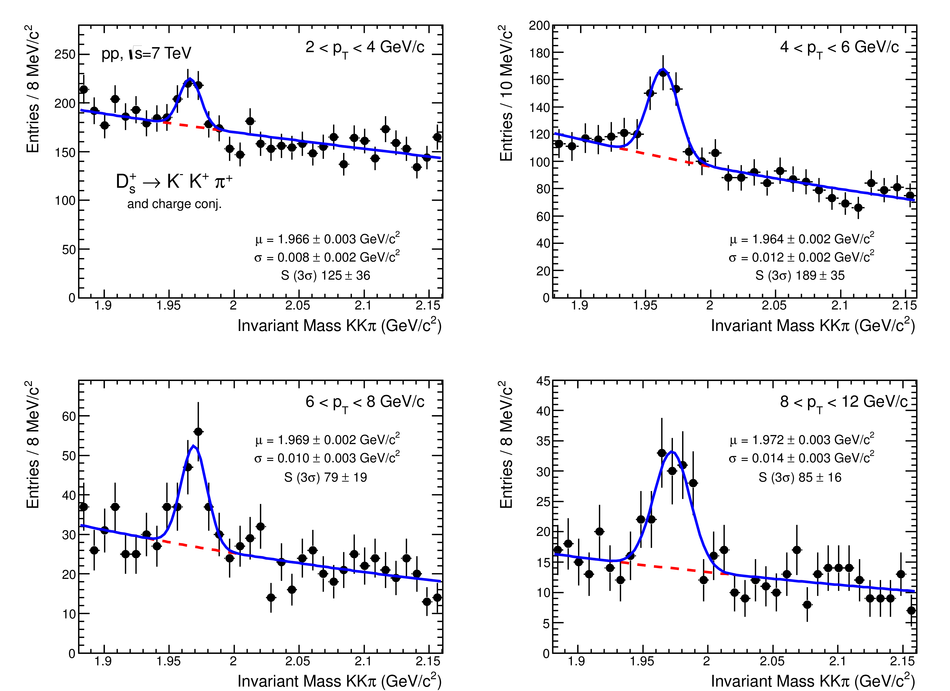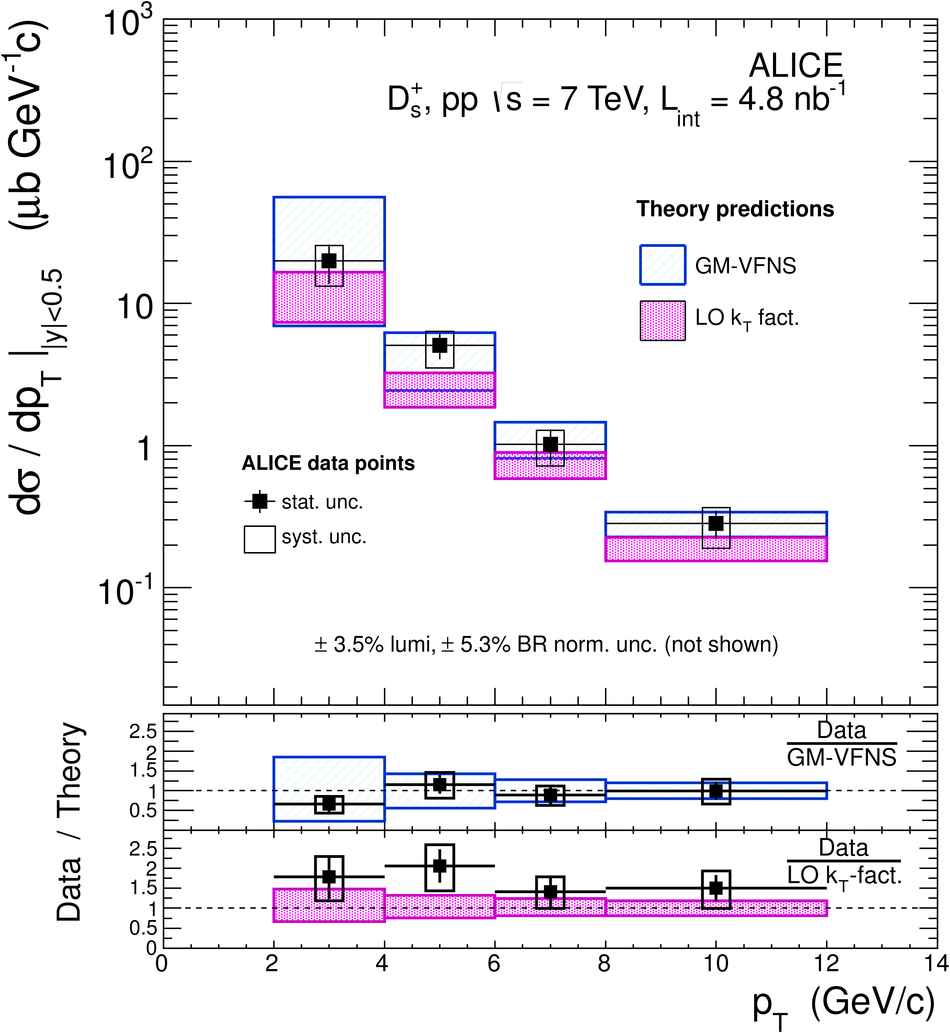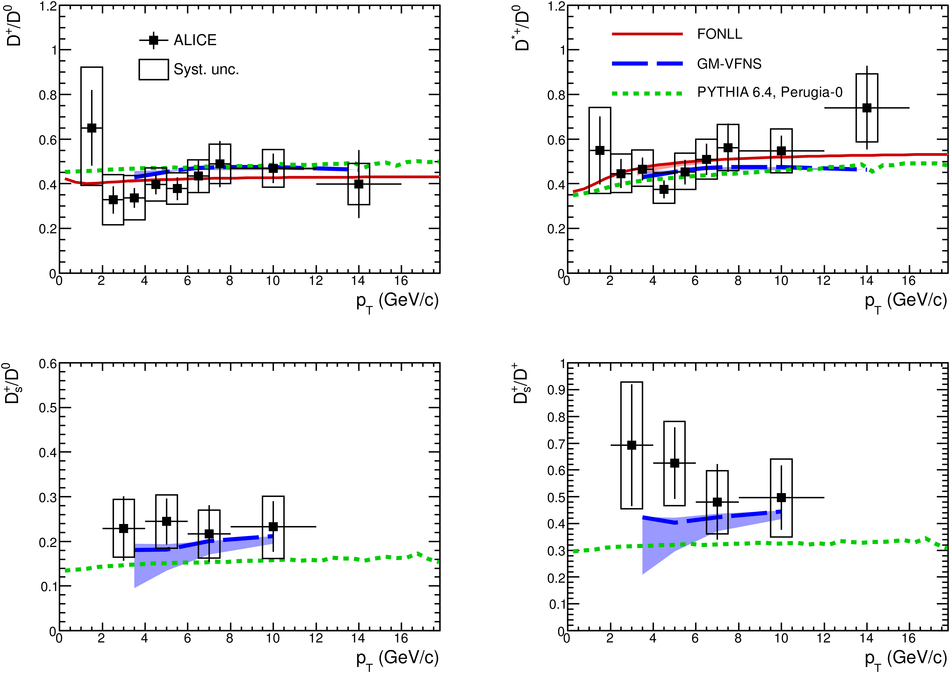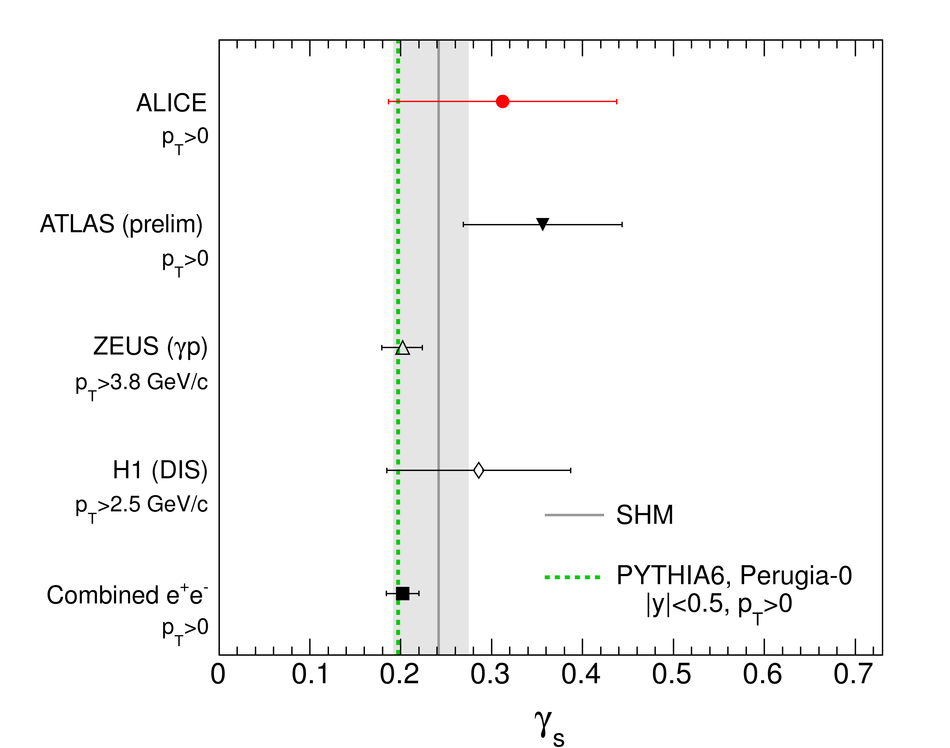The $p_{\rm T}$-differential inclusive production cross section of the prompt charm-strange meson $\rm D_s^+$ in the rapidity range $|y|<~0.5$ was measured in proton-proton collisions at $\sqrt{s}=7$ TeV at the LHC using the ALICE detector. The analysis was performed on a data sample of $2.98 \times 10^8$ events collected with a minimum-bias trigger. The corresponding integrated luminosity is $L_{\rm int}=4.8$/nb. Reconstructing the decay ${\rm D_s^{+}\to \phi\pi^+}$, with $\phi\to {\rm K}^-{\rm K}^+$, and its charge conjugate, about 480 ${\rm D_s^{\pm}}$ mesons were counted, after selection cuts, in the transverse momentum range $2<~p_{\rm T}<~12$ Gev/$c$. The results are compared with predictions from models based on perturbative QCD. The ratios of the cross sections of four D meson species (namely ${\rm D^0}$, ${\rm D^+}$, ${\rm D^{*+}}$ and ${\rm D_s^+}$) were determined both as a function of $p_{\rm T}$ and integrated over $p_{\rm T}$ after extrapolating to full $p_{\rm T}$ range, together with the strangeness suppression factor in charm fragmentation. The obtained values are found to be compatible within uncertainties with those measured by other experiments in $\rm e^+e^-$, ep and pp interactions at various centre-of-mass energies.
Phys. Lett. B 718 (2012) 279-294
HEP Data
e-Print: arXiv:1208.1948 | PDF | inSPIRE
CERN-PH-EP-2012-227







